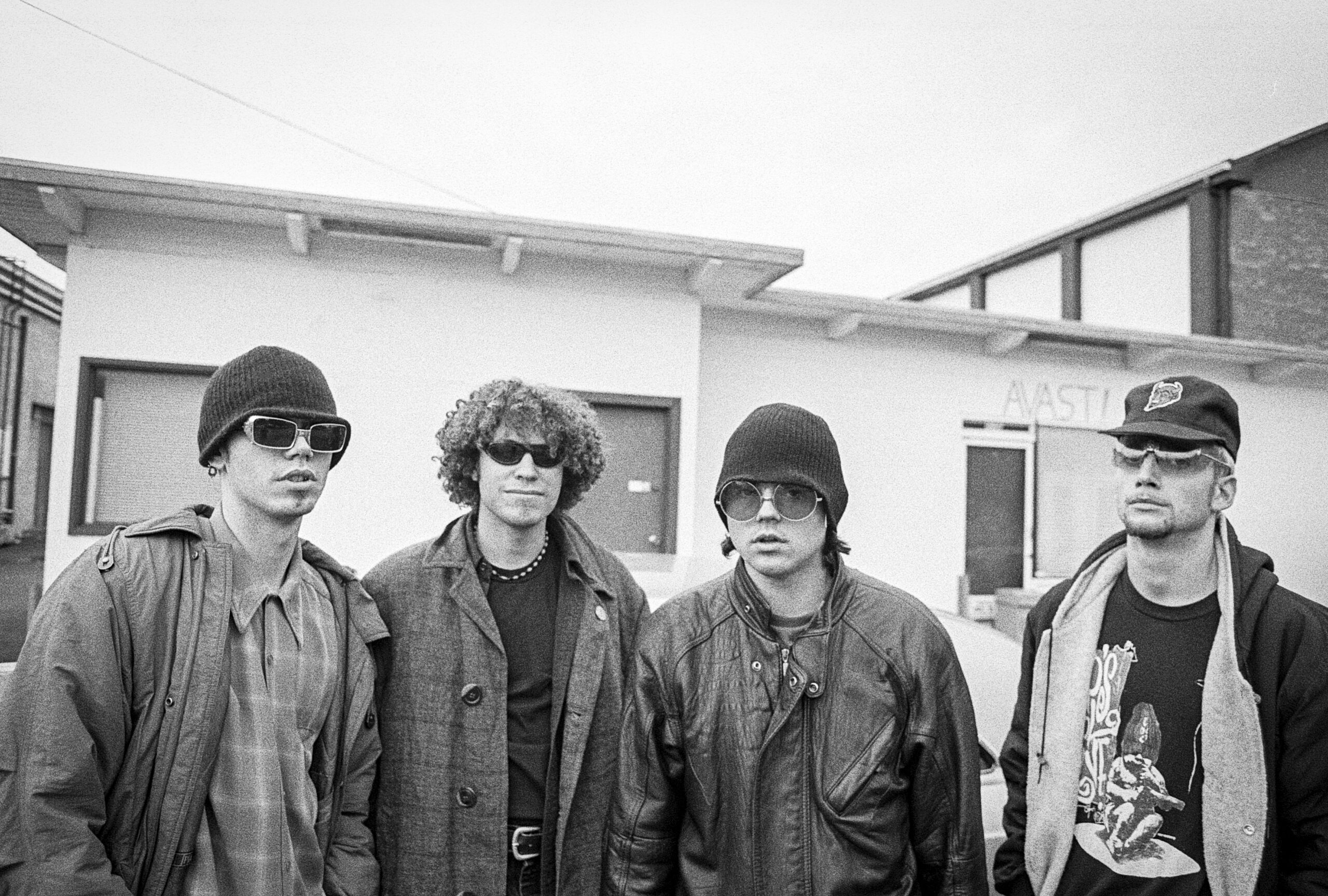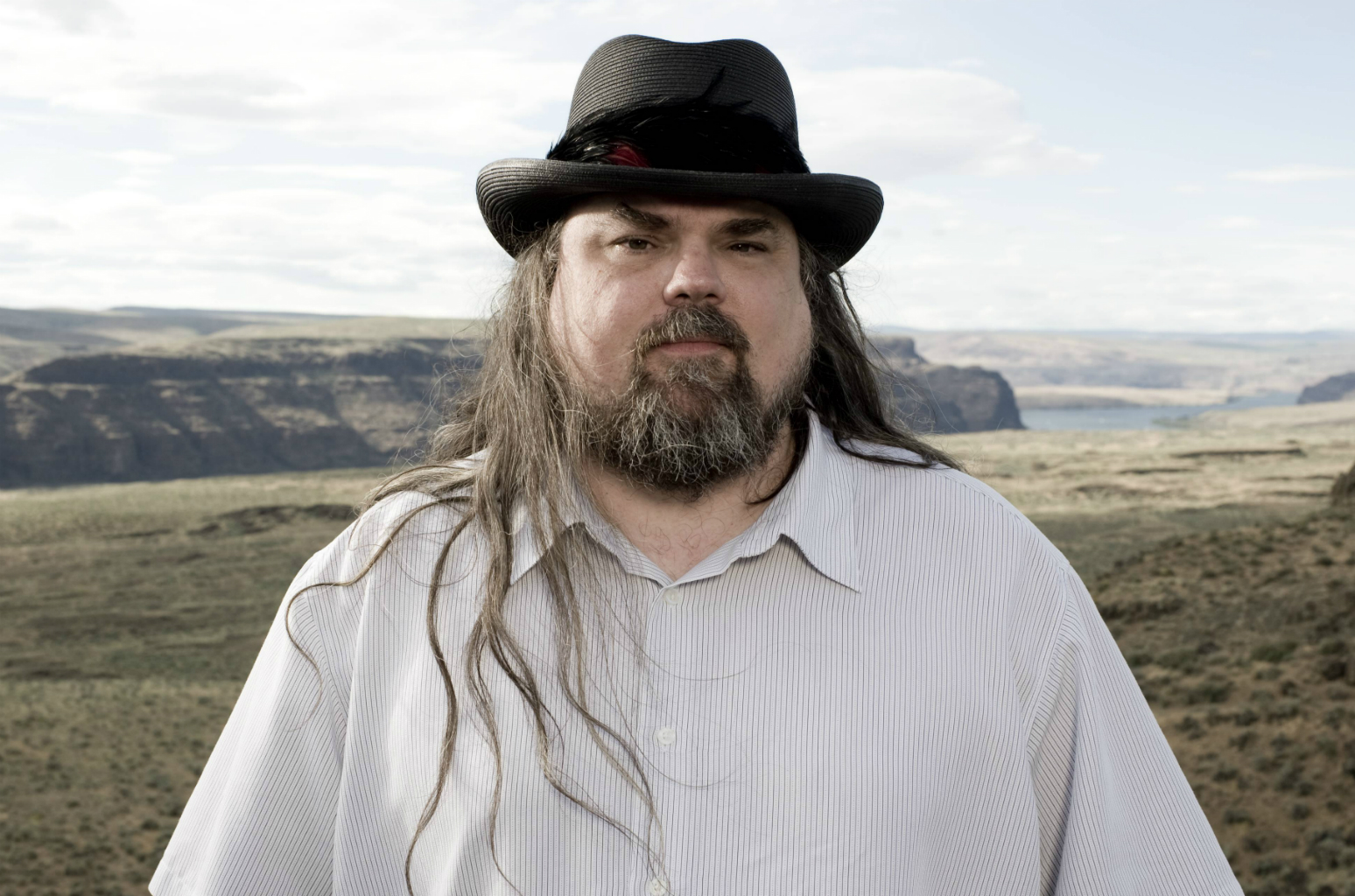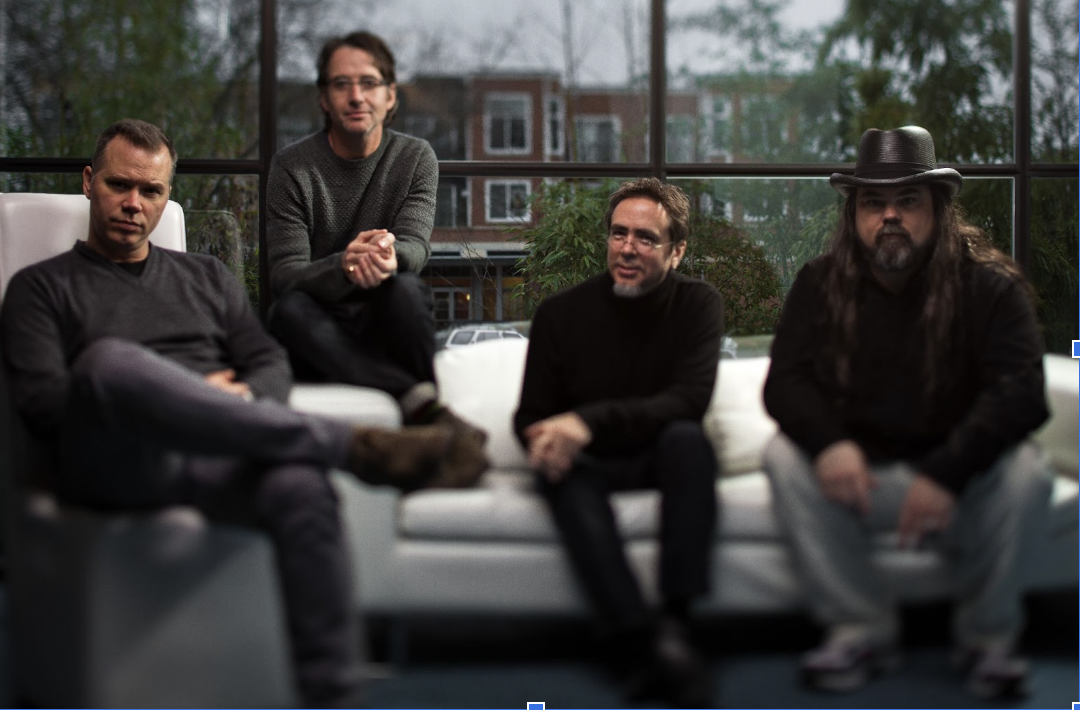Malfunkshun/Mother Love Bone‘s Andrew Wood and Brad/Satchel’s Shawn Smith were two of the greatest vocalists ever to emerge from the Seattle music scene, and Stone Gossard and Regan Hagar just happened to be in bands with both of them. Wood died of a drug overdose at 24 in 1990, just as Mother Love Bone was about to release its major-label debut, and Smith died in 2019 at age 53 from a torn aorta – but Gossard and Hagar are helping ensure their work, and legacy, will not soon be forgotten.
The lifelong friends co-founded Brad with Smith in 1992 and then Seattle-based Loosegroove Records label two years later at the zenith of Gossard’s success in Pearl Jam. With assistance from Brad guitarist Keith Lowe and engineer Floyd Reitsma, they’ve spent the past couple of years completing the final Brad album, In the Moment That You’re Born (July 28, Loosegroove), featuring vocals Smith recorded before his death. An outlier amid the band’s more genial, uptempo sound, it includes some of the darkest and heaviest music in the Brad discography, but there’s also an uplifting nod to its members’ storied Seattle music lineages thanks to a cover of Malfunkshun’s “Stars N’ You.”
Active from 1980 (when Wood and Hagar were still teenagers) until 1988 (when Wood left to join Gossard and future Pearl Jam bassist Jeff Ament in Mother Love Bone), Malfunkshun originally recorded the track for Sub Pop’s classic 1986 Deep Six compilation and always considered it a career highlight. Hagar tells SPIN that Smith was himself a huge fan of Wood’s artistry, which helped him overcome initial qualms about its inclusion on In the Moment That You’re Born.
“‘Stars N’ You’ was a Stone idea to get us to show up at the studio together, which wasn’t always easy,” Hagar concedes. “I think it was a bit of a ploy. Shawn loved Andy Wood so much, so if we say we’re going to cover Malfunkshun, he’ll show up, and maybe we can jumpstart the Brad process. Shawn sounded so much like Andy with his inflections. He channeled him for that track. In a way, we ended up really needing that song. It fit the record and it made sense in the end, even though I was against putting it on because of the entanglements I personally felt about it. I’m so happy it’s there now. Isn’t it crazy how we go through these different lives and different viewpoints, and how something can be so important now but not important later?”
The experience reminded Hagar of his first encounter with Smith in 1988 when they worked the cash register at Seattle’s Tower Records and nerded out over Prince’s then-new album Lovesexy. Smith had been born four hours east in Spokane and raised in Bakersfield, Ca., but in his early 20s, he settled in Seattle at a particularly fertile time for the local music scene, a couple of years before grunge would change everything forever.
“In the basement, you’d re-shrinkwrap the records you played during your shift and count your till and stuff. It would take a good half-hour. We were down there together one evening, and I played him some Malfunkshun I’d just recorded with Andy,” Hagar recalls. “Shawn was super into it and really complimentary. The next day, we’re in the same situation, and he’s like, I brought my tape. He had a thing called Bag O’ Nasty, which was him and a four-track. It was all super funky and soulful. I freaked out! I said, ‘We’re going to start a band. Let me put some players together.'”
The pair first teamed in the funk band Molasses and then in the more rock-driven Bliss, which eventually morphed into Satchel. Hagar had immediately gushed to Gossard about Smith’s talents, and it wasn’t long before he got the itch to join in the fun. “Pearl Jam had finally sold some records, and I was back in Seattle lurking around,” Gossard tells SPIN. “Regan, Shawn, and I kinda jammed together one day at their warehouse, and from that moment on, it was like, let’s make a record. Bliss was going, but I thought, let’s do something else too.”
Augmented by California bassist Jeremy Toback, whom Gossard had never heard play and Hagar had never even met, the musicians rolled tape at Seattle’s Avast Studios in the fall of 1992 and came up with an album’s worth of material far removed from the prevailing, often gloomy Pacific Northwest sound of the time. At the center was Smith’s preternaturally soulful voice, which one reviewer described as a “honeyed falsetto” akin to “the song of another species altogether.”
“That’s the state of mind we were in: anything can happen at any time,” Gossard says of the sessions that birthed Shame, released in late April 1993 by Pearl Jam’s then-label Epic Records. “You just meet a guy in a record store and then you call a guy from California you’ve never played music with, and something great’s going to happen. We were manifesting at that point at a high level. At the time, there was really a premium on people coming from different perspectives. Everything we were doing was like, it’s punk rock but it’s got this other thing. Trying to tie soul music into that seemed totally reasonable, exciting, and absolutely in the range. Everything had an eclectic quality to it because there were no rules at that point.”

“The music at the time was dominated by Prince and Michael Jackson, and that was the backdrop of us thrashing around and saying, we’re going to mix punk and blues and Prince and we’re going to be funky,” Hagar says. “Looking back on it now, that attitude was kind of adorable.”
At first, a reluctant frontman who would hide behind a keyboard, Smith quickly grew in confidence both onstage and off. “Shawn had the skill we all dream about – it’s not being able to shred necessarily, but it’s feeling the music and finding that thing that makes the sound sink deeper into whatever it is,” Gossard observes. “I don’t think Shawn ever touched a guitar before he was in Seattle, but we watched him grow with it,” Hagar says. “His sonic sweeps on guitar have a big quality. The title track of the new album is very much that sound, which, to me, is him picking up a guitar and treating it like a piano. He had a couple pedals to make it even bigger. That became a signature you can really identify as him and not Stone. He’s creating a bed of sound, whereas Stone can be more specific and clear with a guitar.”
Between Gossard’s Pearl Jam commitments and Hagar’s eventual work on the road with Neil Young, Brad released four more albums and an outtakes compilation over the next 20 years and toured as much as time permitted. All the while, Smith would “float around jam rooms in Seattle and play with a lot of different scenes,” says Hagar. “People still are surfacing and going, hey, I’ve got a recording from when Shawn came by our place and did this or that on a track. He went around putting great, groovy stuff on people’s music.”

Work began at leisurely pace on a new Brad album in 2014, with the musicians spending a few days at a time at Gossard’s Studio Litho over the next five years. The core group of songs included what became the swirling, moody title track, and hard-charging rockers such as “Pieces of Sky in My Hand” and “Hey Now What’s the Problem?” Smith’s vocals are often in a much lower register than usual, adding a haunting quality to the material. “In the time since our prior album in 2012, Shawn had discovered something in terms of layering his voice, and it’s where that lower timbre was born,” Hagar says. “It’s really a tribute to Shawn’s singing that he found different vibrations and didn’t just go back to that same place that gave him success,” Gossard adds.
In the Moment That You’re Born also showcases Smith’s more tender side on the beautifully sung piano ballads “Meadow in Autumn” and “Take Me Back Home,” while “I’m Digging U” features saxophone accompaniment from Hans Teuber to add color to a vocal take Smith was planning to re-sing but never got the chance to. “We were really close to finishing the album before Shawn died,” Hagar says. “We had planned to put bells and whistles on at the end, but all the main structural stuff was already there.”
By 2022, Gossard, Hagar, and Lowe felt ready to revisit the material and prepare it for release, a process aided by “filtering everything through our first year when we were Brad,” per Gossard. “Where were we at our best, and why? We marveled at Shawn’s vocals and our bittersweet love for each other. We were sharing it with our good friend Hans, who is a beautiful piano and horn player and helped us a lot with this process. It really was an enjoyable process, even though we didn’t know if everything would come together and sound like a record. It took until the end for that to happen, and for us to see how it all fit.”
“Mostly, it was a feeling of reminiscing and trying to be in that place of discovery — a state of mind we should have tried to be in as much as we could have been through our career, but struggled to do at different times,” he continues. “We cherished it, and looked at it as a beautiful opportunity. We’re so thankful we had music to finish. Any day, any one of us could be gone, you know? I think we wanted to really pay tribute to Shawn and thank him for being who he was. All his unique and eclectic qualities made us so happy and inspired us. It also sometimes made us mad and challenged us, but it was a joy. We made this album with a lot of heart, and with the essence of Brad.”





